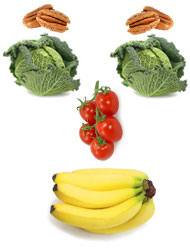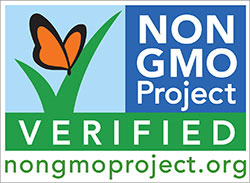Elimination Diet Shopping List

If you feel you are having health symptoms that may be associated with a food sensitivity, one of the best ways to discover the offending item is by following an elimination diet. This involves eliminating any potential food items that you may be sensitive or allergic too. These foods are then reintroduced one at a time while paying close attention to how your body responds.
How to do the elimination diet...
Important Shopping Tips
On the elimination diet, if you aim for most of your food to be from the produce department, shopping is very quick and easy. These are foods that offer you the absolute best, highest quality nutrition. They are power-packed with nutrients such as vitamins, minerals, and antioxidants. There are also over 25,000 different phytonutrients that help strengthen your immune system.
 Learn more about the amazing antioxidants &
Learn more about the amazing antioxidants & other powerful anti-inflammatory foods:
The Body Healer Protocol...
For all other food items that are not fresh, whole, single ingredients (e.g. fresh fruits, vegetables, nuts, meats, or fish), especially food that come in packages or cans, read every single item on the ingredient list very carefully. In general, if the item is not a whole food that you recognize, or if there are any chemicals or questionable items, then put it right back on the shelf.
Here are 12 important shopping tips to help you make the best food purchasing choices:
- Always select fresh, whole foods wherever possible over canned, packaged, or frozen foods. The big benefit is that you will not have to pay attention to any ingredient lists.
- White vinegar is often made from corn. Make sure you omit it when you omit corn.
- Popular items listed as one thing may contain other eliminated ingredients (e.g. rice cakes may contain other products containing gluten). Read each ingredient carefully.
- Avoid any natural coloring or flavoring unless the label specifically states it is from a vegetable or fruit (e.g. coloring from paprika). Even the term "natural flavor" can be composed of up to 50 different chemicals per flavor. ...Read more
- Sugar, corn, soy, and their derivatives are present in most refined foods and frozen meals. Most are genetically modified unless specifically labeled as organic. Let's take a look at some of the corn and soy derivatives hiding on ingredient labels:
Soy Derivatives Corn Derivatives - any ingredient with the word "soy"
- soy flour
- lecithin
- hydrolyzed vegetable protein
- soy protein isolate
- protein concentrate
- textured vegetable protein
- vegetable oil (fully or partially hydrogenated)
- soybean oil
- plant sterols
- soy sauce
- soybean oil
- guar gum
Only choose fresh, organic soybeans (edamame) or unpasteurized soy sauce (nama shoyu).- any ingredient with the word "corn"
- citric acid, any citrate ingredient
- ferrous gluconate
- cellulose
- corn starch, corn meal
- corn flour
- corn syrup, high fructose corn syrup
- corn oil
- monosodium glutamate
- dextrin, maltodextrin, dextrose, polydextrose, glucose, maltitol, maltose, mannitol, ethanol
- saccharin
- hydrolyzed vegetable protein
Only choose fresh, organic sweet corn.Today's processed soy is NOT a healthy food... - Watch out for condiments that contain hidden (and unhealthy) ingredients. They should contain items such as herbs, spices, sea salt, and apple cider vinegar. Unfortunately, most contain refined sugar or salt. Especially watch out for pickles and relishes that often contain food coloring to give them that strange greenish-yellow glow! Some of these colorings are banned in Europe as they have been linked to various health conditions. ...Read more
- I very strongly recommend that you only purchase items that have not been genetically modified, as GMOs are directly linked to food sensitivities and allergies.
 Genetically modified foods are foods that have had their protein structure altered to become a product that the body recognizes as foreign. Studies on GMOs by scientists outside of the US have linked long-term use of these foods to organ damage, reproductive failure, and death. Unlike in over 60 countries worldwide, GMOs are not required to be labeled in the US, therefore the only way you can ensure the food you are buying is not genetically modified is to look for the Non-GMO project seal on packaged foods you purchase. Organic foods are also not genetically modified (however, pay attention to which ingredients on the ingredient list are organic and which are not).
Genetically modified foods are foods that have had their protein structure altered to become a product that the body recognizes as foreign. Studies on GMOs by scientists outside of the US have linked long-term use of these foods to organ damage, reproductive failure, and death. Unlike in over 60 countries worldwide, GMOs are not required to be labeled in the US, therefore the only way you can ensure the food you are buying is not genetically modified is to look for the Non-GMO project seal on packaged foods you purchase. Organic foods are also not genetically modified (however, pay attention to which ingredients on the ingredient list are organic and which are not).
What exactly are GMOs The 8 myths of GMOs
The 8 myths of GMOs  Avoiding GMOs at the market
Avoiding GMOs at the market - When introducing dairy, always begin with unpasteurized (raw) dairy if possible. Raw cheese contains the important enzymes and nutrients that help us digest dairy protein, elements that are destroyed during pasteurization. Many people (including myself) have no reaction to raw dairy, but have a very noticeable reaction to pasteurized dairy when reintroducing it after removing it from the diet.
Raw cheese is now widely available in every US state in the refrigerated natural food section of supermarkets. Health food stores will often have a greater variety. Raw milk is more difficult to find unless you live in states where it can legally be sold in the stores
Raw vs. pasteurized dairy Benefits of raw dairy
Benefits of raw dairy - If you use oils, ONLY use oils that are labeled as "cold-pressed" and unrefined, and use them in small quantities. Liquid oils are a 100% fat product that have been extracted from their whole food, with all other nutrients and fiber stripped. It is always better to get your fats from their original whole foods such as avocados and olives.
- If you are a vegetarian, eliminate meat and fish, and instead consume vegetable proteins and non-glutinous grains.
- If you eat animal protein, ALWAYS make sure your meat is not factory-farmed. Look for organic, (and preferably pasture-raised meat) which will ensure it is not only free of hormones, antibiotics, steroids, and other unwanted contaminants, but also ensures that your meat is much higher in nutritional value rather than inferior meat as a result of being raised on genetically modified corn and soy feed. Most importantly, your purchase does not contribute to the animal cruelty very common in factory farming environments. If you purchase any sliced deli meat, watch out for undesirables on the ingredient list such as sugar. Almost all packaged bacon purchased in the US now contains sugar.
Why free-range meat Eating meat responsibly
Eating meat responsibly
- If you eat fish, choose wild caught and choose wisely by following our guide to making healthy seafood choices.
Seafood concerns Healthy seafood guide
Healthy seafood guide
The easiest way to make shopping a simple and uncomplicated experience is to limit any packaged food item as much as possible, and when you do, make sure those packaged foods only contain whole foods (e.g. onion, black beans, quinoa, avocado, garlic).
Sound Strict?
If these tips sound a little stricter than other elimination diets, they are. This is because I care very much about your health, and my goal is to not only help you track down any foods that may be causing you discomfort, but also help you eliminate foods that shouldn't be in our food chain to start with - the chemicalized and industrialized foods. Any elimination diet that does not address the question of genetically modified foods is, in my opinion, not a good one. Likewise, any diet that does not advocate healthy-meat sources as compared to factory farmed meat sources is also questionable.
Look at it this way: If you are going to put the time and effort into following an elimination diet, then why not go all the way and eliminate the rest of the junk at the same time? Your body will be singing celestial songs of appreciation at eliminating ALL the toxic foods completely from your body!
Shopping List
Although this is a comprehensive shopping list, there may be some items that are missing (e.g. a tropical fruit or vegetable you enjoy). Feel free to add them for more variety!
|
|
|
(1) Made with apple cider vinegar, whole ingredients and spices only.
(2) Watch out for hidden ingredients such as refined sugar.
(3) Avoid white vinegar, often made from corn.
(4) Often contains corn starch.



